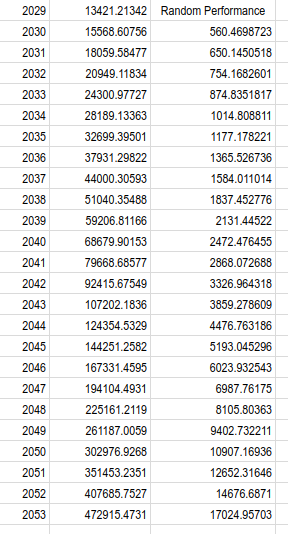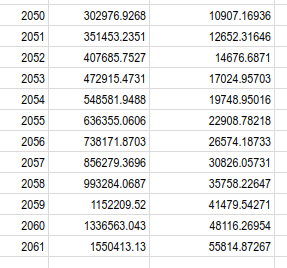In November 2010, AnandTech reported about an SSD that was achieving 800 MB/second sequential read speeds:

In July 2018, AnandTech reports that 2700 MB/second SSD drives are available:

In this period of about 10 years, PCIe SSD speeds increased by a factor of 3.4, at least when it comes to sequential read speeds, which is an increase of about 16% per year. Projecting this trend forward, we get a sequential read speed of 15.5 GB/s in 2030 and 68 GB/s in 2040:

DDR3 RAM near the end of its lifetime had a maximum data rate of about 17 GB/s. So around 2030 PCIe SSDs will be just as fast as DDR3 RAM when it comes to sequential read speeds. However, DDR3 will still be much faster in terms of random read performance. Today’s best PCIe SSDs have a random read performance of about 100 MB/s, only 3.6% as fast as their sequential performance (100/2750). If that continues to be the case, then by 2030 the random read performance of these SSDs will be only 612 MB/s. Even by 2040, their random read performance will “only” be 2.47 GB/s, still very short of DDR3 RAM.
In fact, we will have to wait until 2053 to get PCIe SSDs that are as fast as DDR3 RAM’s last standard:

However, note that DDR3 as the beginning had a data rate of only 6.4 GB/s. SSD random reads will reach that speed somewhere around 2046.
As for DDR4, the maximum data rate is 25 GB/s, not that much more than DDR3’s latest data rate. If we extend the above forecast, we see that SSD random reads will reach that speed around 2056:

By that time new technologies may have made the difference between RAM and long-term storage obsolete, so that computers may only have one form of storage.